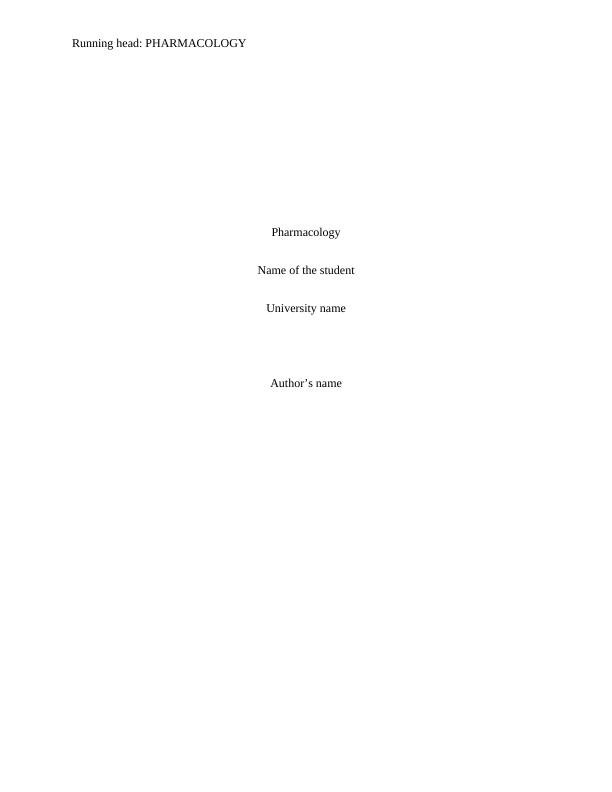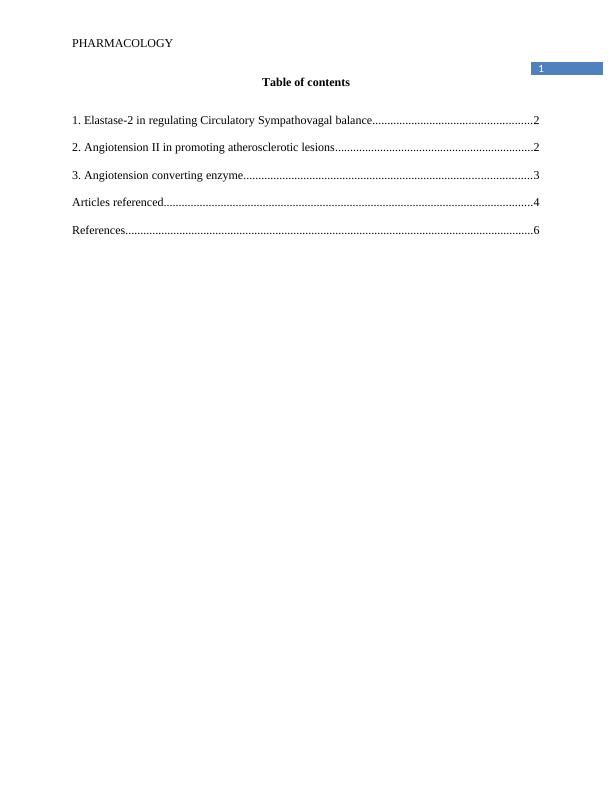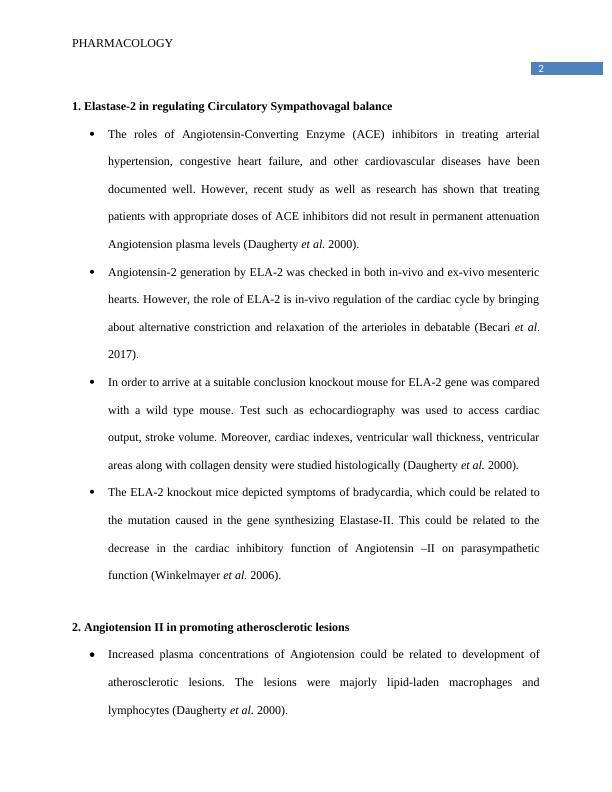PHARMACOLOGY - Angiotensin-Converting Enzyme | Assignment
8 Pages1240 Words42 Views
Added on 2020-03-04
About This Document
The assignment is based on PHARMACOLOGY in which we will explain the following topics related to the assignment - Elastase-2 in regulating Circulatory Sympathovagal balance, angiotensin in promoting atherosclerotic lesions, and the angiotensin-converting enzyme.
PHARMACOLOGY - Angiotensin-Converting Enzyme | Assignment
Added on 2020-03-04
ShareRelated Documents
End of preview
Want to access all the pages? Upload your documents or become a member.
Assignment On Pharmacology
|6
|1658
|118
Angiotensin-converting Enzyme Name: Institution: Date:.
|7
|432
|94
Nursing Management of Hypertension
|6
|1308
|122
Captopril: a potent drug which is a competitive inhibitor on the angiotensin converting enzyme
|5
|1792
|195
Role of RAAS in Cardiovascular System | Essay
|5
|1258
|25
Drug Protocol Development for Atorvastatin in Hypercholesterolemia
|9
|2418
|225



